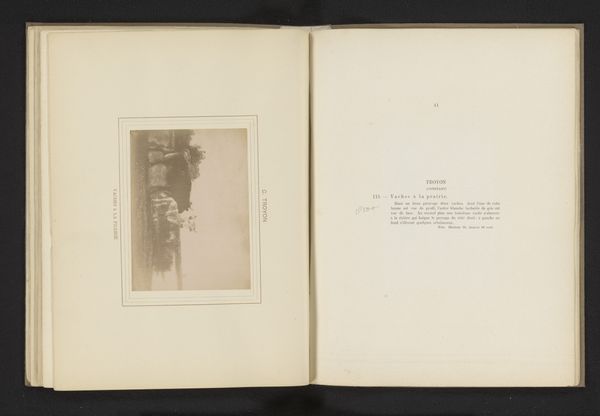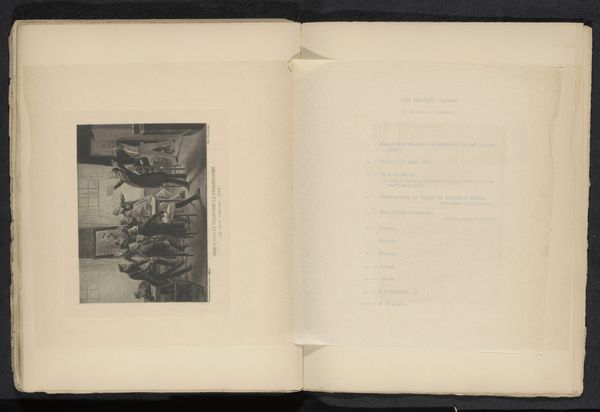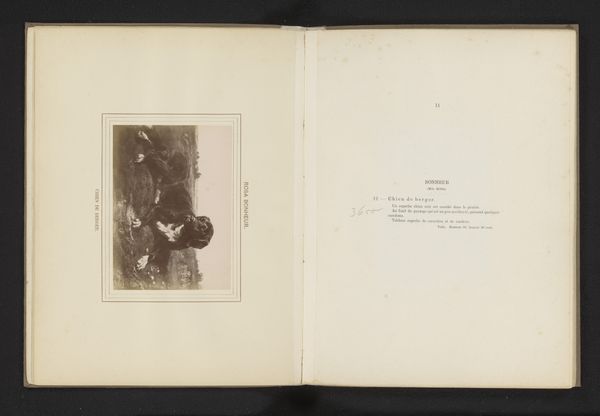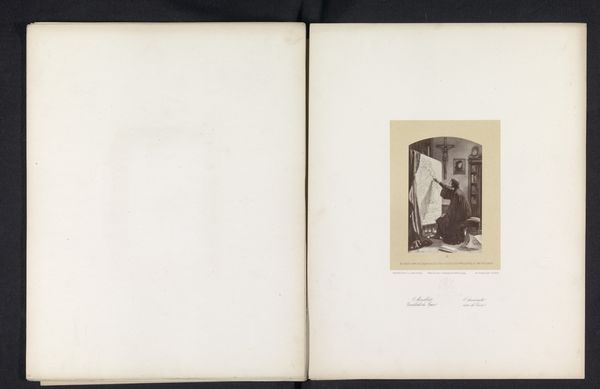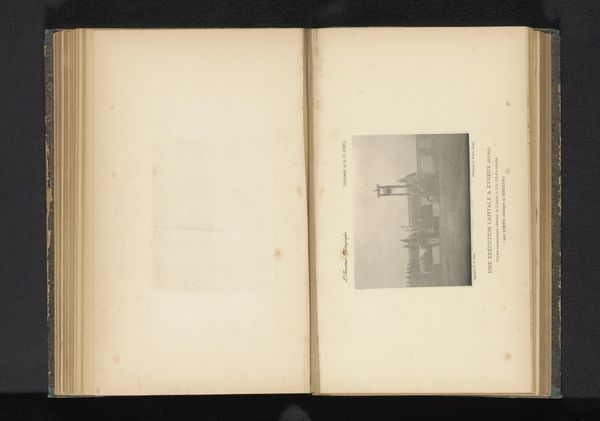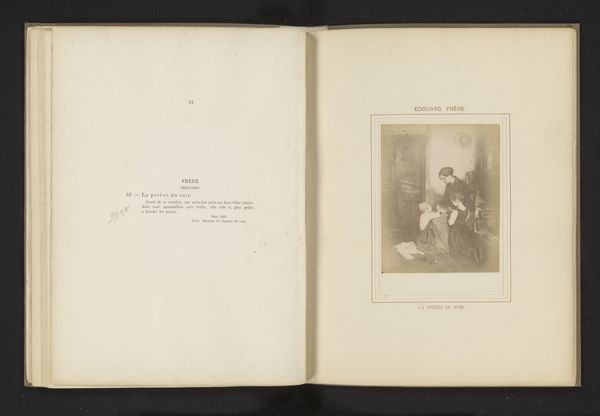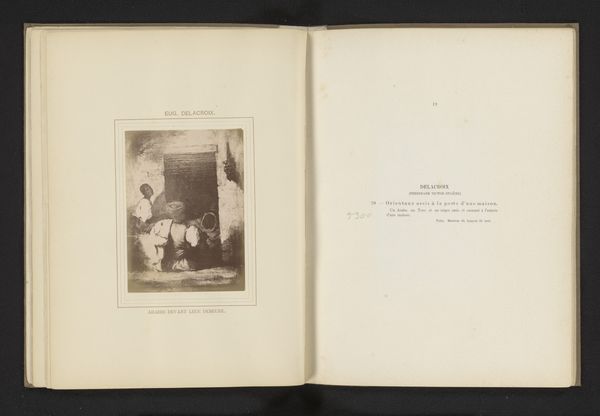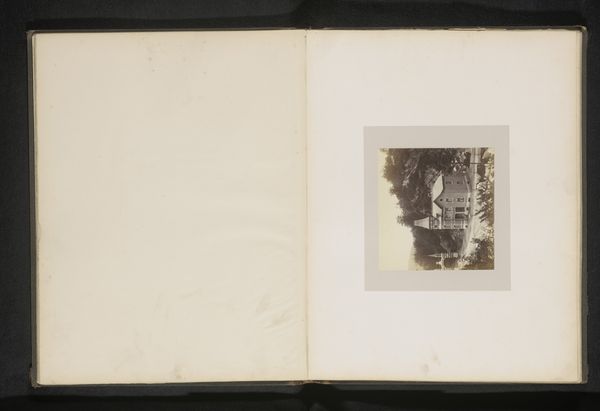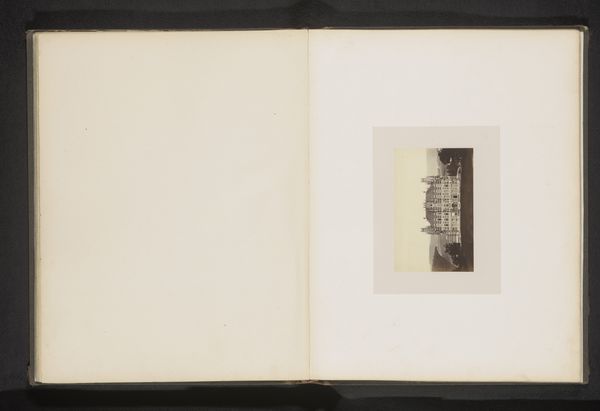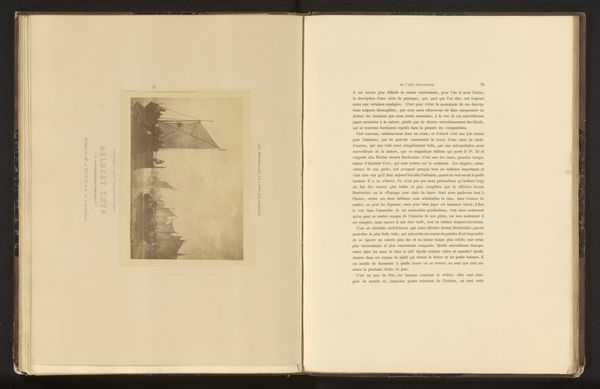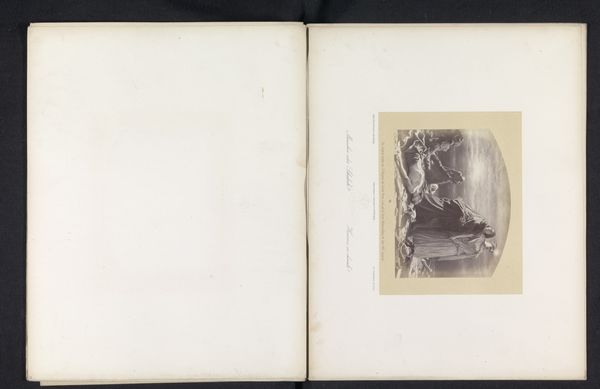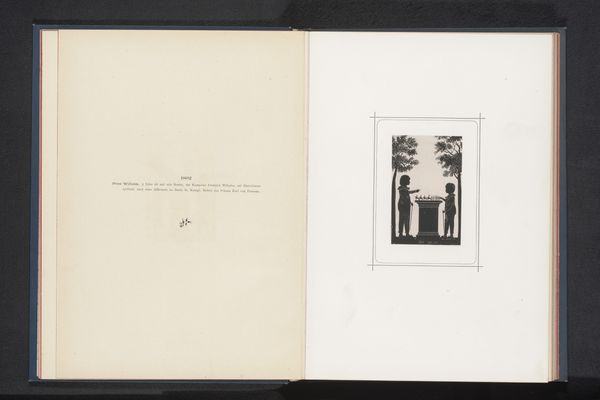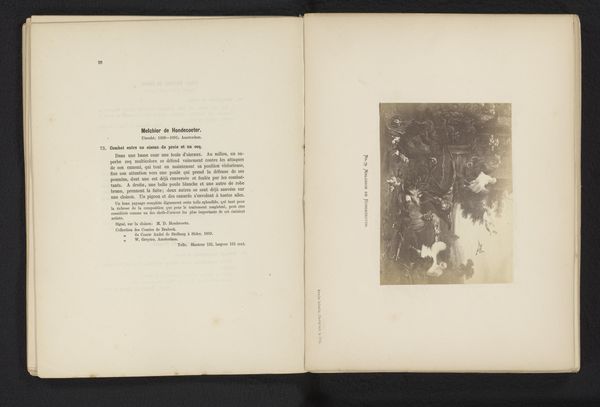
Fotoreproductie van het schilderij Une église protestante door Johannes Bosboom before 1883
0:00
0:00
print, photography
#
dutch-golden-age
# print
#
photography
#
genre-painting
Dimensions: height 93 mm, width 134 mm
Copyright: Rijks Museum: Open Domain
Editor: Here we have a photographic reproduction, dating from before 1883, of Johannes Bosboom's painting, "Une église protestante," housed right here at the Rijksmuseum. What strikes me immediately is the image itself is presented in a bound album or book...What can you tell us about it? Curator: Well, focusing on its materiality, we see photography serving not just as a tool for documentation, but as a method of mass distribution and consumption of art. This reproduction collapses the supposed hierarchy between the "original" painting and its "copy." How does the photographic process itself alter our experience and understanding of Bosboom's work? Is this "high art" or another form of labor? Editor: That’s fascinating. I hadn't considered the labour involved in producing this photographic print, as well as its availability. How would it have circulated at the time, and what might that tell us? Curator: Consider how the act of photographic reproduction makes the image widely available but at a reduced scale. The print allows middle-class consumers, for example, to own a version of Bosboom's painting without buying an original artwork. In what ways did that accessibility disrupt the established art market? And what did this mean to an artist at that time? Editor: I suppose that changes the artist's role, right? I mean, from singular creator to part of this larger reproductive industry? Curator: Exactly. The artist's involvement in or control over the reproduction process also becomes a key question. Did Bosboom authorize this photograph? Did he profit from it? And how did this altered form affect his own artistic production? We can look at his painting practice to see. Editor: Wow, this album page opens up questions that stretch way beyond the image itself, that help me think about access to culture in the late 19th century and who benefits. Curator: Yes, considering photography not just as a representational medium, but as a material commodity intertwined with evolving class structures transforms our understanding of its cultural role and effect on painting in this era.
Comments
No comments
Be the first to comment and join the conversation on the ultimate creative platform.
